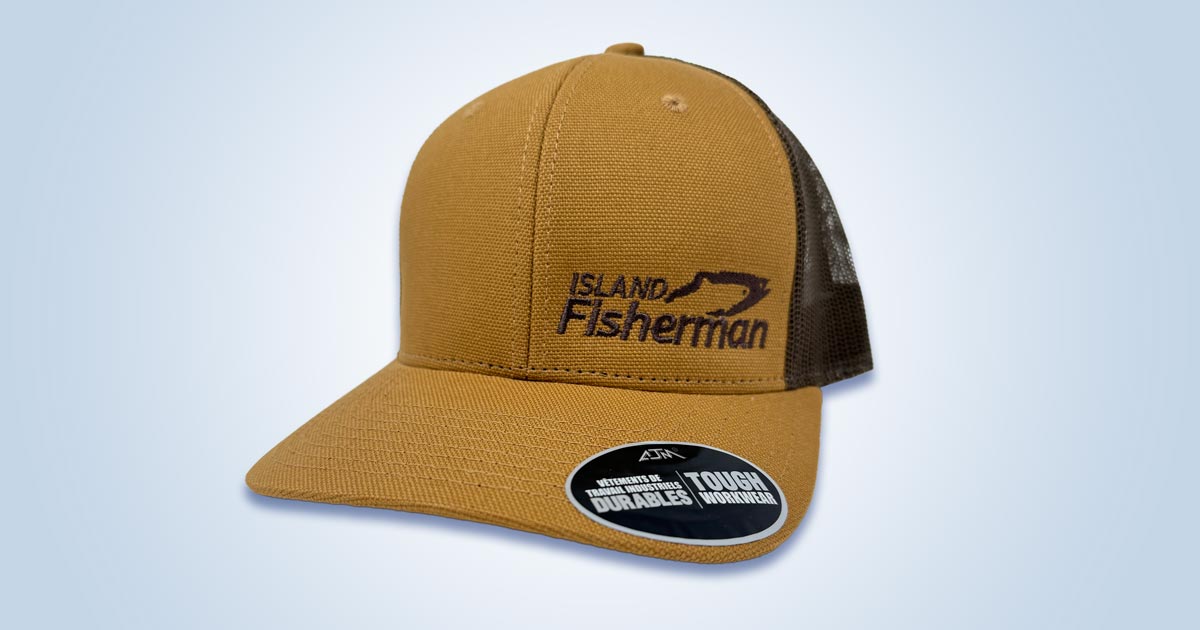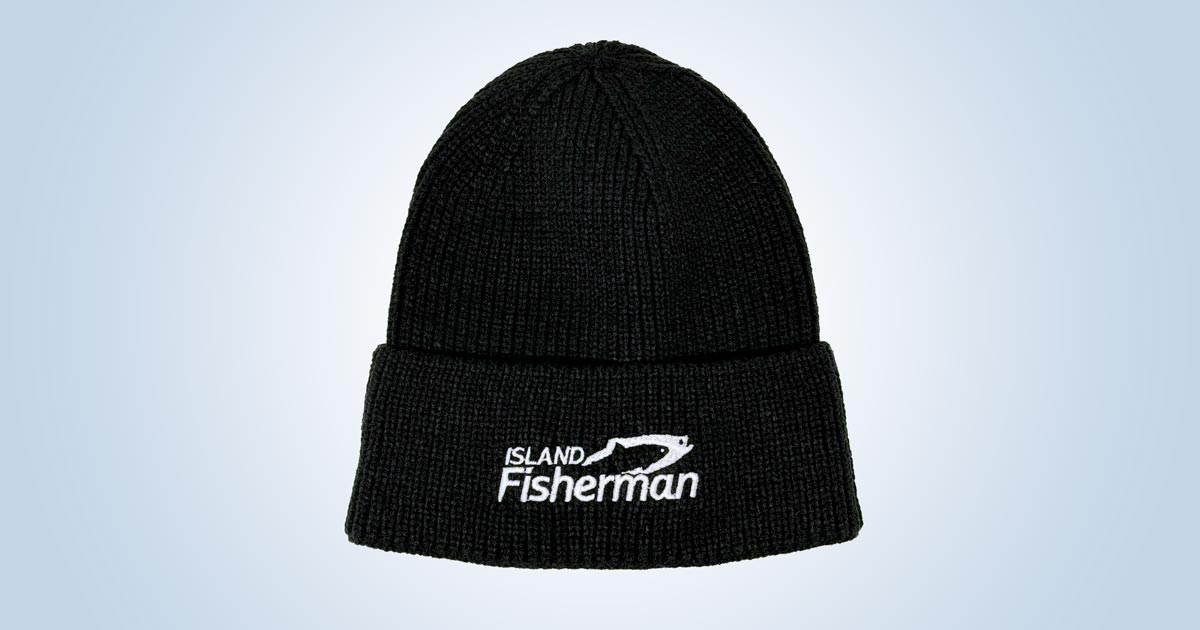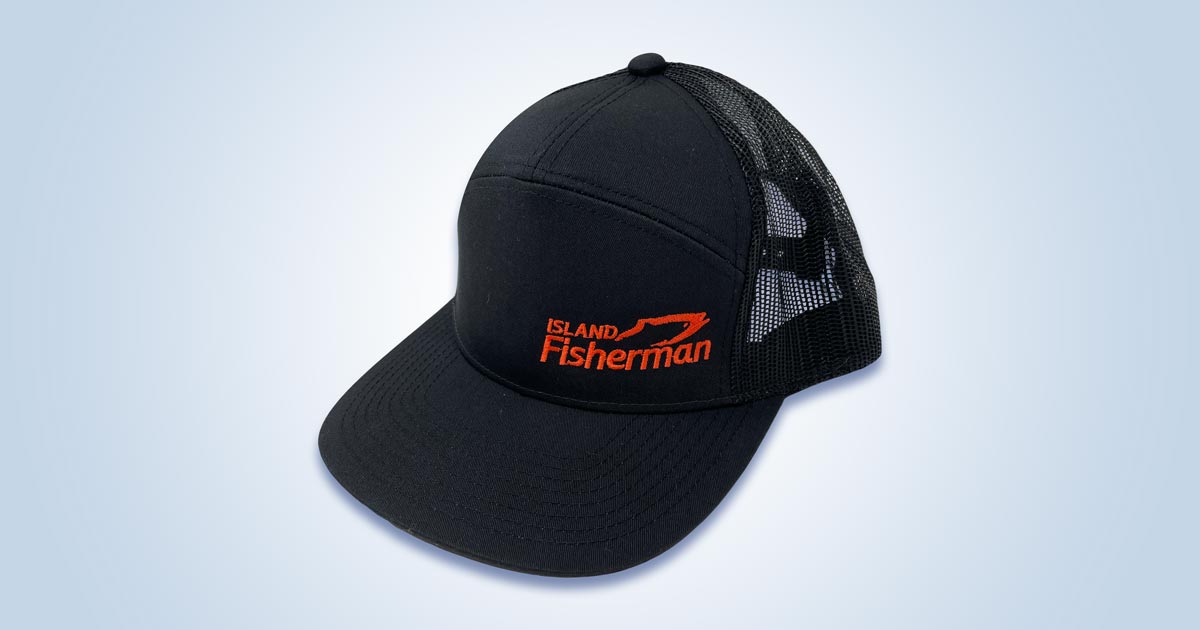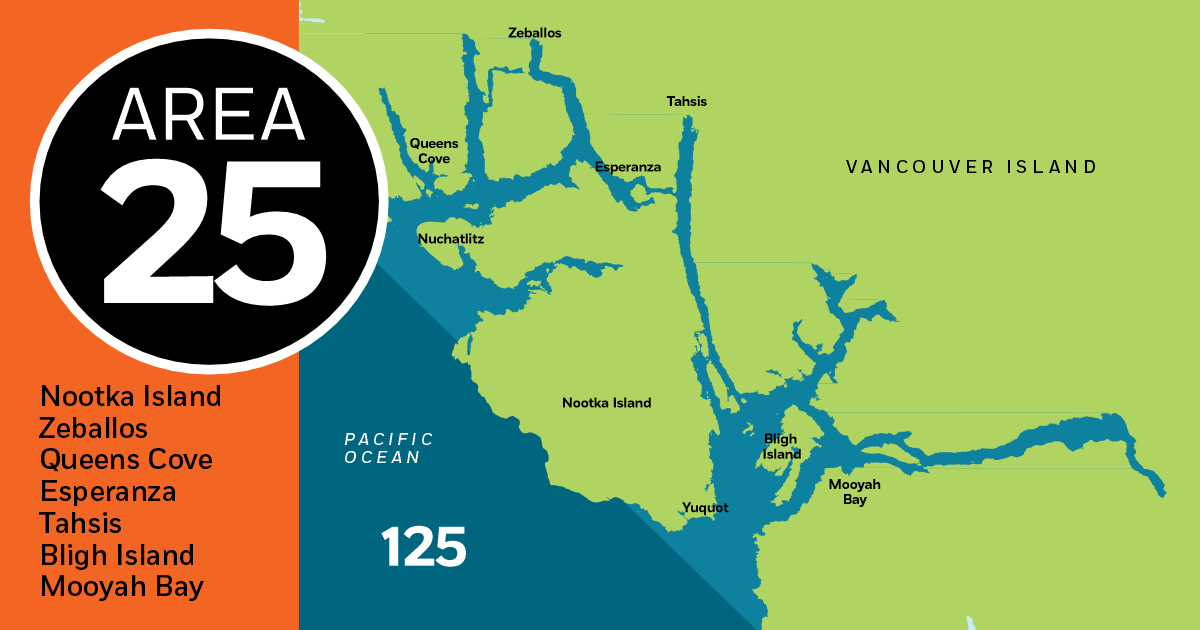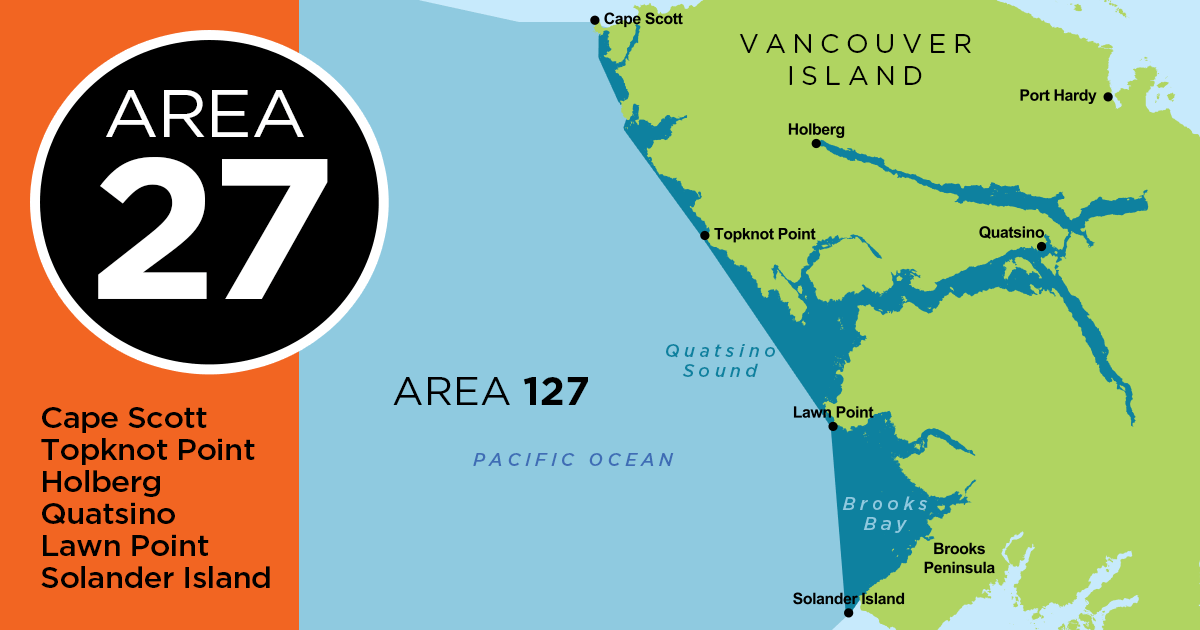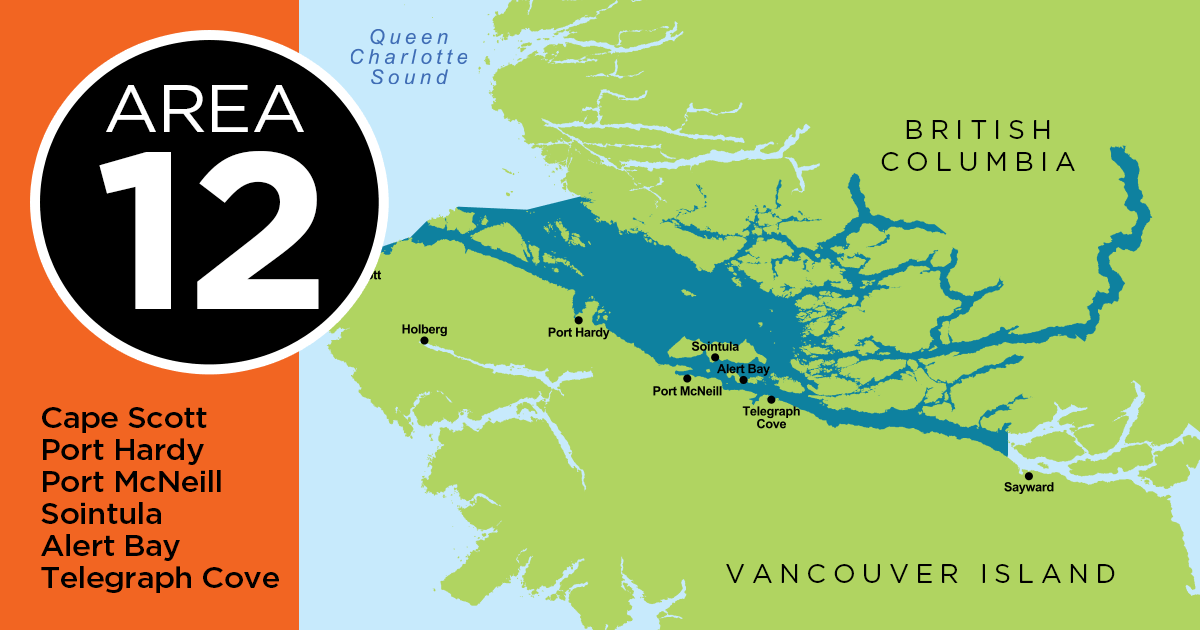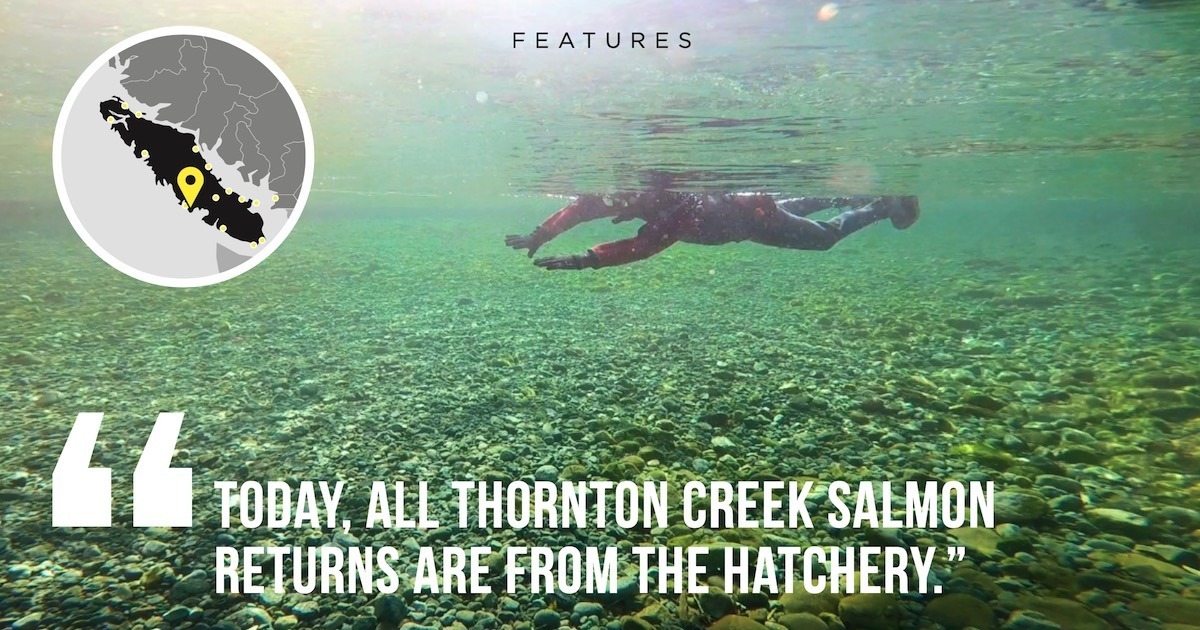
The Thornton Creek Hatchery is located near the northwest corner of Ucluelet Inlet, about as far out west coast as you can get. It was established by the Department of Fisheries and Oceans (DFO) in the early 1970s to test the Japanese chum hatchery system with the hope of creating a chum fishery in Ucluelet Harbour. The test was successful, but the facility then sat idle until 1981, when the Thornton Creek Enhancement Society took control.

Crew in front of the hatchery, L-R: James, Miles, Emily, Marlie, Dave (Photo: Thornton Creek archives)
Since then it has operated as a DFO Community Economic Development Project (CEDP). This component of the Salmonid Enhancement Program began in 1978 to bring salmon restoration to the community level, with a special focus on improving the economic conditions for First Nations. Currently there are 19 CEDP projects in BC, of which 13 are run by First Nations and the remainder by community organizations.
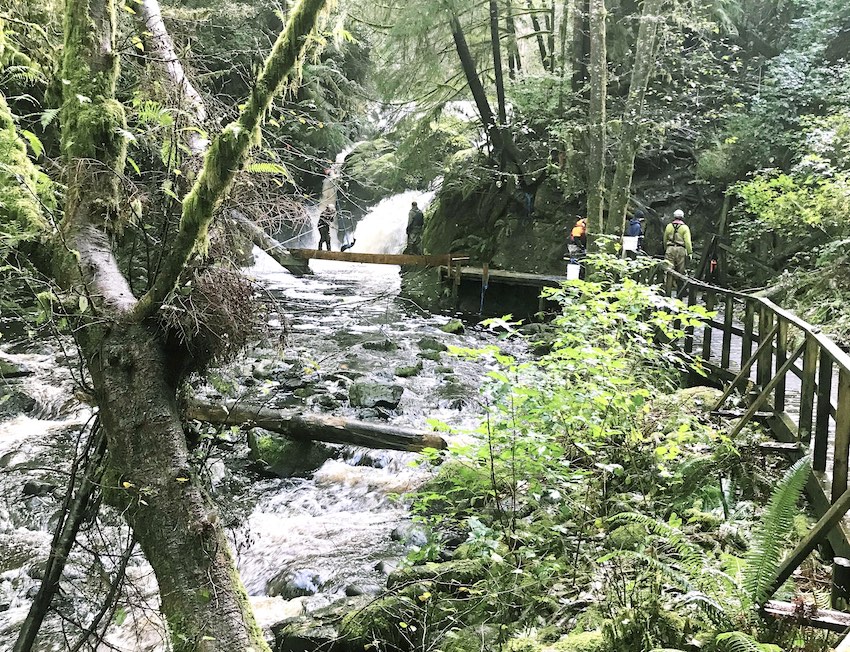
Dip-netting
The Thornton Creek facility is unusual. It’s located on a small stream that never had natural salmon runs because of a combination of impassible falls and unsuitable spawning habitat between the falls and tidewater. Even today, all Thornton Creek salmon returns are from the hatchery.
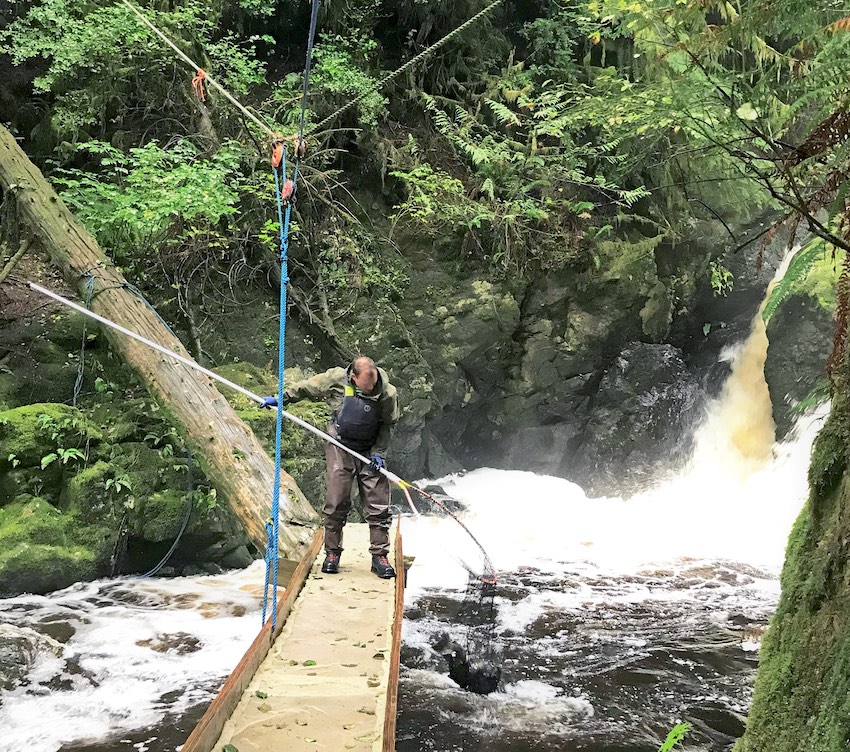
Dip-netting Chinook at falls
Ucluelet has less than 2,000 residents but they are completely behind the society’s work. The hatchery and the community are thoroughly integrated through partnerships with the Toquaht First Nation, Clayoquot Biosphere Trust, Central Westcoast Forest Society (now called Redd Fish Restoration), Mosiac Forest Management, Ucluelet Aquarium, and local businesses. Its goals are to restore and sustain salmon runs in their corner of Barkley Sound while providing educational outreach, which includes guided hatchery tours for as many as 6,500 visitors annually.
Nuu-chah-nulth
Coastal First Nations have lived here for at least 4,000 years. In the Nuu-chah-nulth language, Ucluelet means “people with a safe place to land.” Ucluelet is geographically positioned to take advantage of passing salmon runs, and in its early days developed into an important commercial fishing port. Logging was the other economic pillar, but it was also a principal cause for salmon habitat loss prior to the 1990s. While commercial salmon fishing fortunes have declined over the last three decades, recreational fishing, surfing, wildlife viewing, and storm watching have backstopped the economy, turning Ucluelet into an important tourist destination. However, the salmon connection still runs deep. So it’s no surprise that Ucluelet would support activities to restore local streams and revitalize fishing opportunities.

James checking Chinook ripeness with Sarita holding the net bag (Photo: Thornton Creek archives)
The hatchery provides invaluable services for other streams in the region. When the society took over, their workload expanded to include rearing Chinook and coho, while the hatchery pivoted to a satellite role. Satellite hatcheries are central rearing facilities that jumpstart weak regional salmon runs.
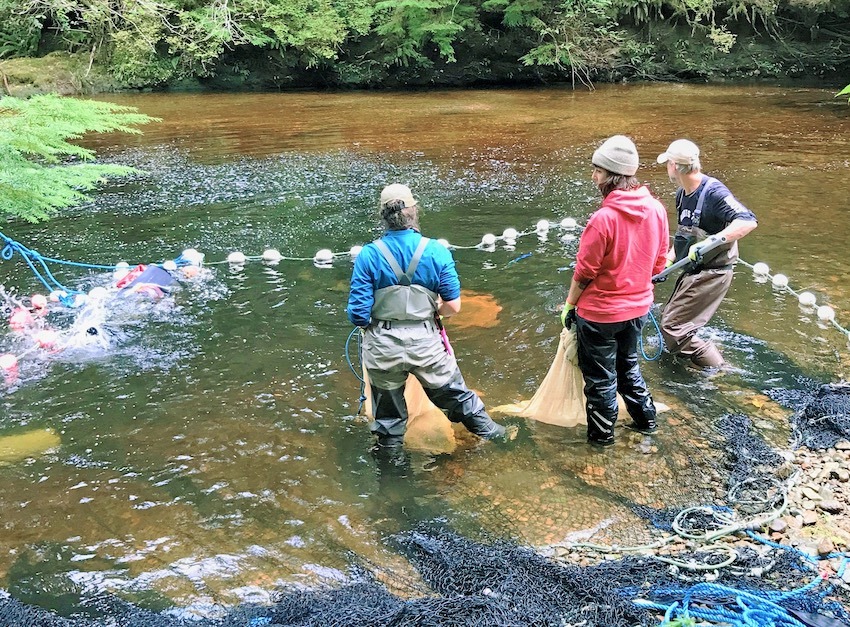
Seining Chum from Little Toquaht River
A few adult salmon from depressed runs are captured and taken to the hatchery, where the eggs are stripped and fertilized, hatched out, fed during the rearing stage, and finally released back into the stream their parents came from. This protocol preserves genetic stock integrity. What happens if a run has been completely wiped out? In this case the closest genetically compatible brood stock is used. Chenatha River chums— which once numbered 5,000-6,000 annually—received donor stock from the Little Toquaht River, while Toquaht Chinook came from the Robertson Creek hatchery near Port Alberni.
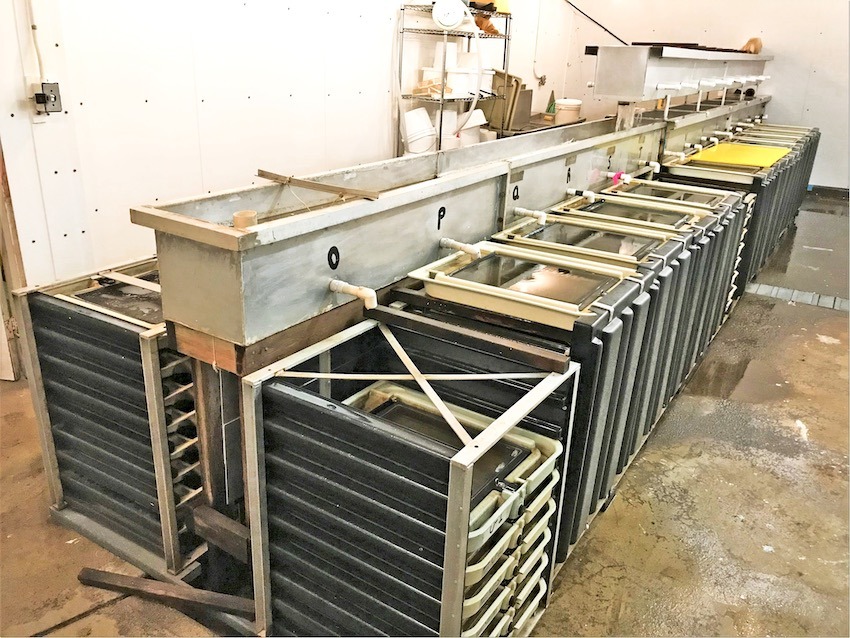
Egg incubation trays in the hatchery
Thornton Creek Recent Developments
According to hatchery manager Dave Hurwitz, the efforts of approximately 35 volunteers, which include local students and the Ucluelet First Nation Warrior Youth Group, have been paying off (except for Smith Creek, which did not meet its chum salmon goal in 2021, when this article was written):
- Toquaht & Effingham River Chinook doubled last year’s escapements, while Chinook hatchery returns were normal
- Upper Kennedy River coho stayed in the target range
- Hatchery coho returns met the target
These results must be weighed against mixed to poor salmon escapement trends extending as far north as Alaska. However most local streams that the Thornton Creek hatchery supported bucked this trend or held their own.
Science and Innovation Key Hatchery Objectives
The volunteers are not directly involved in hands-on stream restoration, however they work closely with those that do, like the Redd Fish Restoration Society. In 2020, they planned on testing water quality in some streams but COVID prevented that from happening. They are looking to restart this project in 2021, including stream fertilization if the water tests suggest it’s needed.
Hatchery workers do stream counts and swims to assist DFO stock assessment. In 2020, they conducted 21 surveys on eight local streams including daily checks on Thornton Creek during the spawning period. This volunteer work helps DFO understand how salmon populations respond to changes in harvest, ocean survival, and habitat conditions while monitoring escapement trends. (Refer to the Ucluelet Region Location Map and Stream Names that the Thornton Creek hatchery supports).
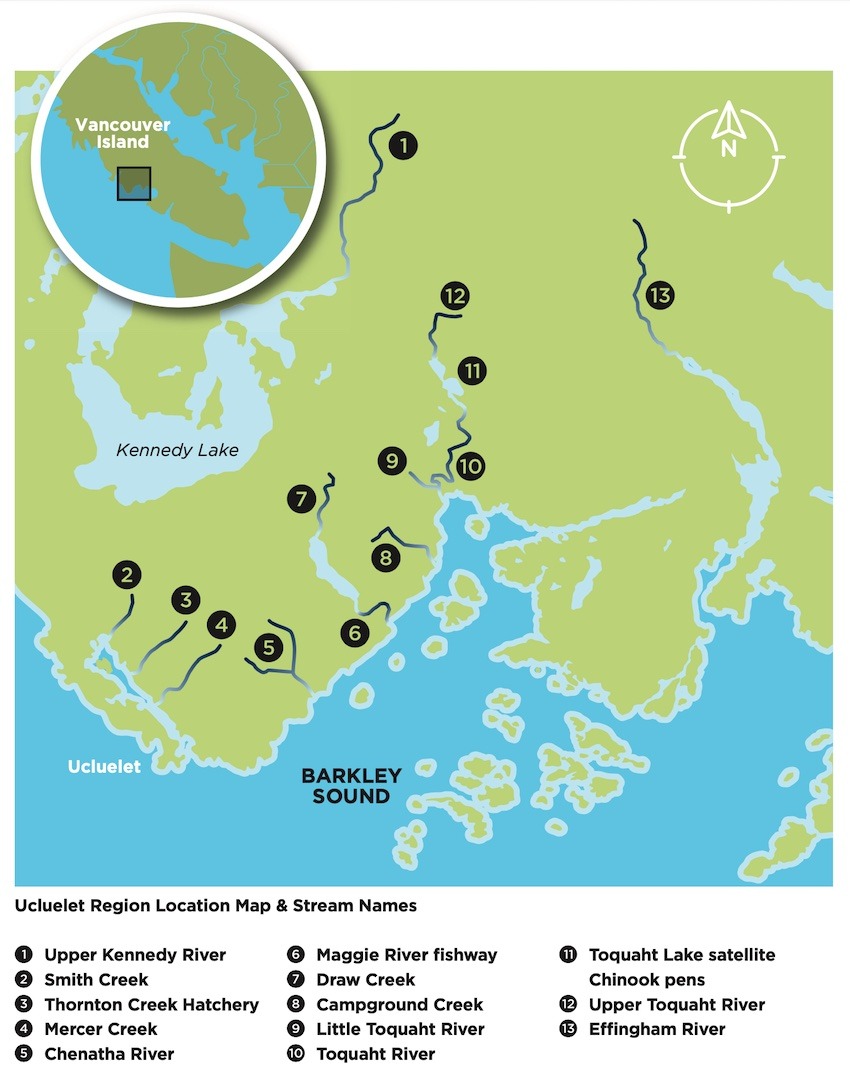
This isn’t all they do. The hatchery is embarking on an exciting co-venture with Tom Balfour from the Central Westcoast Forest Society. The study is called the West Coast Vancouver Island (WCVI) Juvenile Chinook Survival and Release Strategy. The hatchery will tag 5,000 Toquaht Chinook smolts, then set up arrays to follow them to sea. During the remainder of the year, they will monitor the young salmon’s progress by assessing samples caught by seining and micro trolling. DFO and the Toquaht First Nation are co-partners in this early survival assessment project.
The Society has also been using innovative hatchery techniques intended to mimic nature from brood capture to smolt release. Innovations include bringing adult salmon holding tubes that keep maturing salmon in the river until they are ready to be transported to the hatchery.
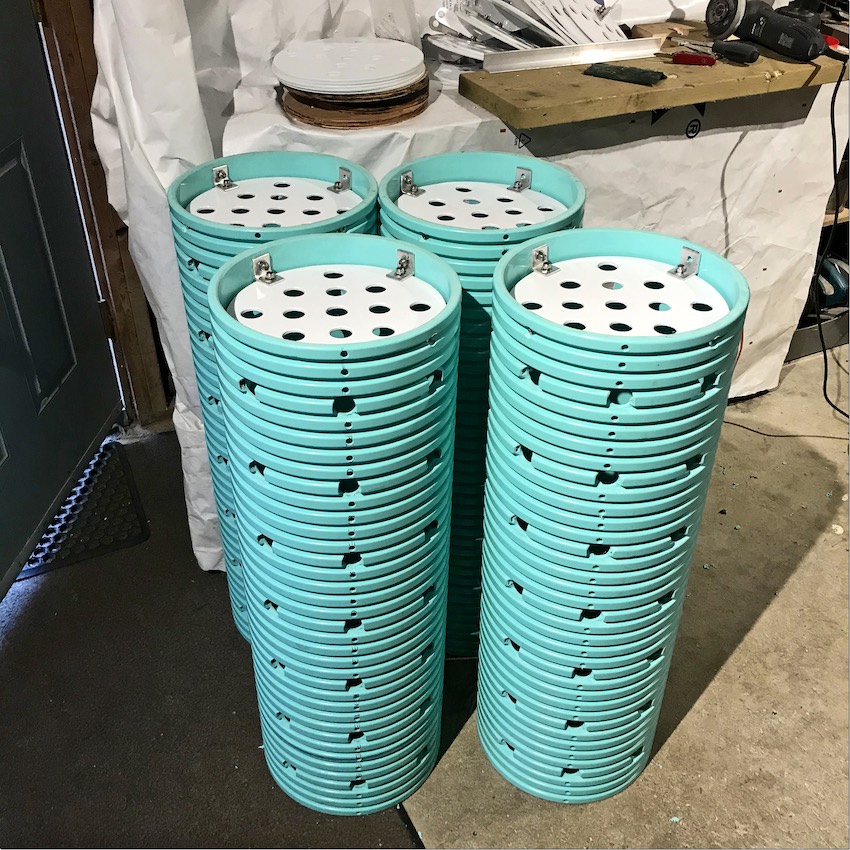
Custom built salmon tubes
They waso incorporated rearing strategies that teach fry to seek cover under hemlock boughs when they introduce dummy predators to the holding troughs and repainting troughs from white to brown. Repainting produces fry that are more naturally colored. Fry releases are done in small batches and on favorable tides, and they are varying the fry release sizes and weights to assess which strategies produce the best adult returns.
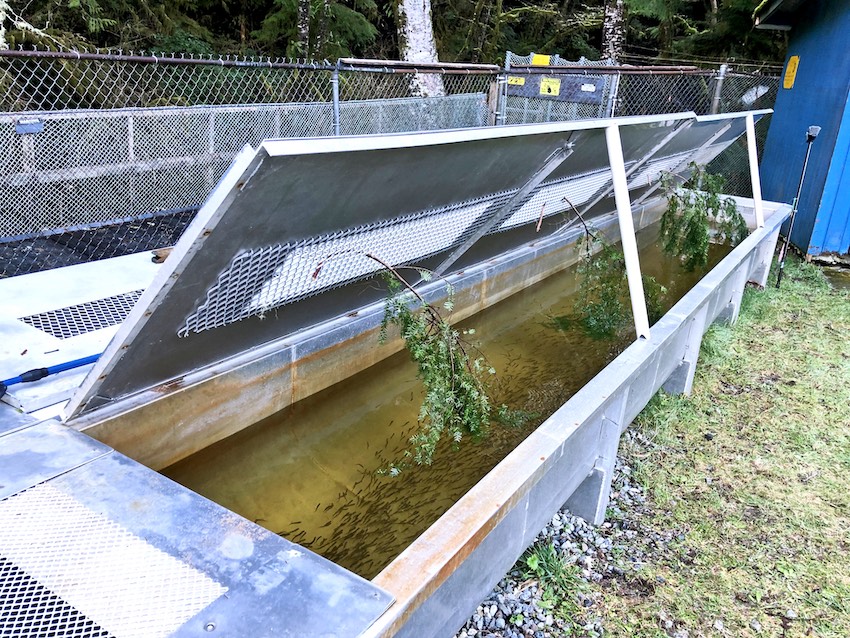
Hemlock boughs hanging from the raceway for training salmon fry to seek cover
Even with volunteer labour, this work costs money. According to Hurwitz, DFO funds 70-80% of operational expenses, but infrastructure, research and education outreach depend on support from organizations like the Pacific Salmon Foundation, local businesses, Cermaq, Clayoquot Biosphere Trust, ECO.ca, local governments and visitor donations to the hatchery. DFO has not increased funding for 32 years, and COVID bit into their visitor funding.
Have you ever wondered about what a year at the Thornton Creek Hatchery looks like? This video highlights every step they take with salmon, from surveying spawning adults, to rearing alevins, to releasing fry.
Video courtesy of https://www.thorntoncreekhatchery.com/videos
This article appeared in Island Fisherman magazine. Never miss another issue—subscribe today!
Visit the Store
$34.99
$34.99
Featured Catch
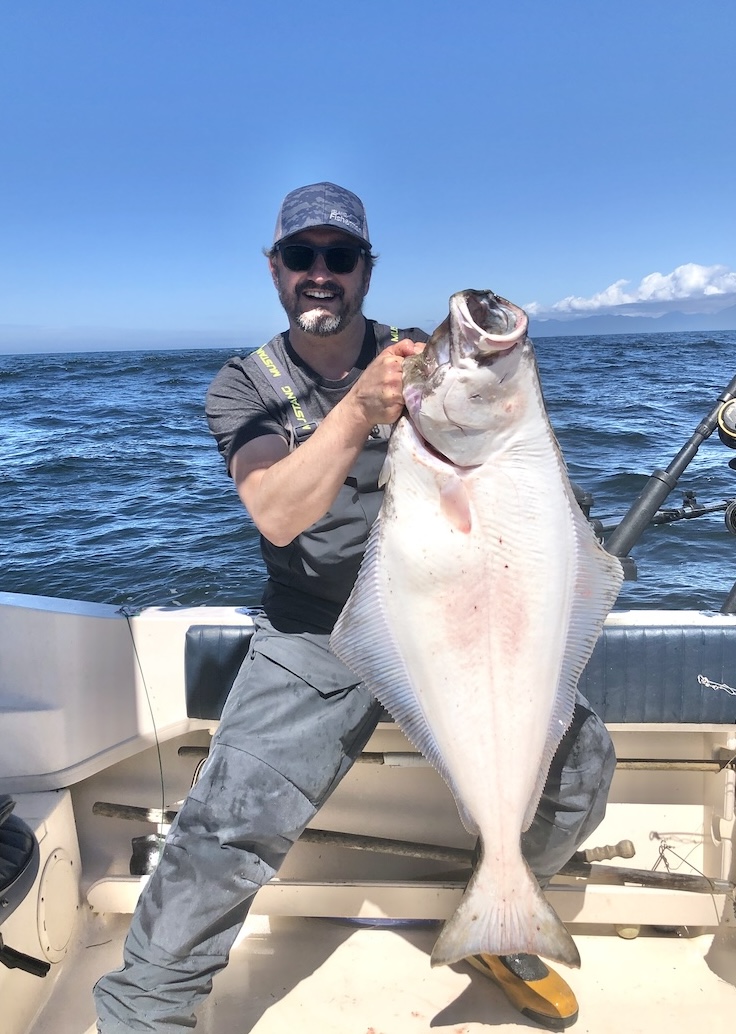
Joel Unickow halibut (Photo: Rob Frawley Lucky Strike Sportfishing Tofino)

